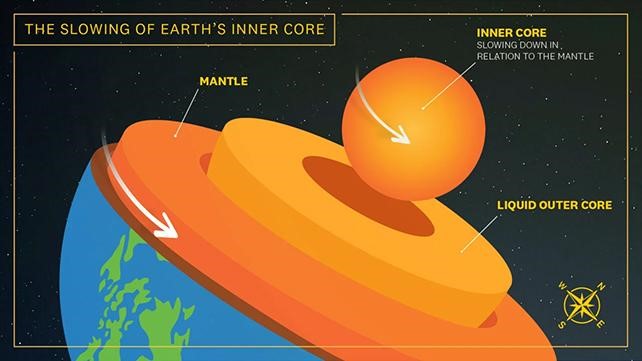Earth’s Inner Core May Be Changing Shape, Study Finds
Why in the news?
A study published in Nature Geoscience suggests Earth’s inner core has deformed at its outer boundary due to gravitational forces or turbulent flow in the outer core, affecting its rotation and seismic wave patterns observed over the past decades.
Study Overview and Key Findings:
- A study published in Nature Geoscience suggests that Earth’s inner core has changed shape over recent decades, particularly at its outer boundary.
- John Vidale, a geophysicist at the University of Southern California, stated that the outer core’s gravitational pull might be influencing the inner core’s movement.
- Previous research indicated that the inner core does not rotate at the same speed as the rest of Earth, with variations in its rotation rate over time.
- The inner core plays a crucial role in generating Earth’s magnetic field and is linked to changes in the planet’s rotation and day length.
Evidence of Inner Core Deformation
- Scientists initially aimed to confirm the slowing rotation of the inner core but discovered unexpected seismic variations at the Yellowknife station.
- Identical earthquake waves should have produced the same seismic signals, but differences were observed, suggesting structural changes at the inner core’s outer boundary.
- Possible reasons include turbulent flow in the outer core or gravitational pull from denser mantle regions, causing deformation near the inner core’s melting point.
How the Study Was Conducted ?
- Scientists use seismic waves from earthquakes to study Earth’s interior, as these vibrations change based on the density and elasticity of underground layers.
- The study analyzed earthquakes from the South Sandwich Islands, a volcanic chain in the South Atlantic Ocean.
- Researchers compared over 100 “earthquake pairs” recorded between 1991 and 2004 at seismometer stations in Fairbanks (Alaska) and Yellowknife (Canada).




